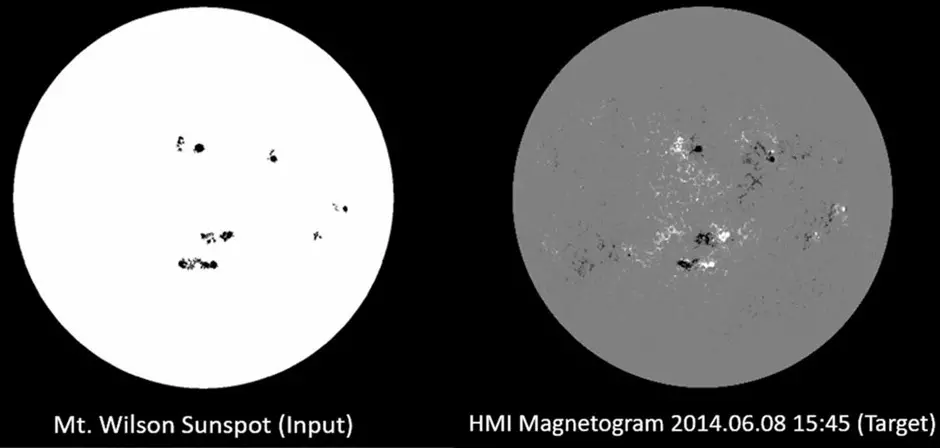In 1612, Galileo Galilee reviewed the sun with his telescope, projecting the image on a white screen. At the bright disk, the shining darkens and smash small dark blots. It was far from the first discovery of solar spots - about their existence known with deep antiquity. However, Galilee drew them with great accuracy, and these images are still preserved.
Today, the Sun is investigating incomparably more sensitive and complex devices. They "see" the star in different wave ranges register magnetic fields whose activity leads to the appearance and spots, and mass emissions, as well as many other phenomena in the sun. However, Galilee drawings have a separate value - historical: they were created when there were no other tools, and only they retained the data on the activity of the Sun 400 years ago.

Recently, the team of developers from the University of Konchi in Seoul created a neural network, which was treated with ancient drawings, turning them into exact analogues of the pictures obtained by one of the key modern tools of Heliophysics - the American SDO probe operating in the UV band. The results of this work are presented in the article published in The Astrophysical Journal.

To train the model, scientists turned to the archive of the Observatory Mount Wilson, where since 1912 and - according to tradition - still every day make sketches of the sun and his spots. Having filled images for 2011-2015, they were complemented by UV images and data of the SDO magnetometers, made on appropriate days. This array was used to teach a neural network.
Finally, Galilee drawings were introduced into the system - and it was able to reconstruct not only the analogues of photographs of SDO, but also the power lines of magnetic fields, which they were then, in 1612, in the vicinity of the long-past spots. Scientists hope to improve their neural network and use it for the reconstruction of the Sun, drawn and other astronomers of the past.
Source: Naked Science
